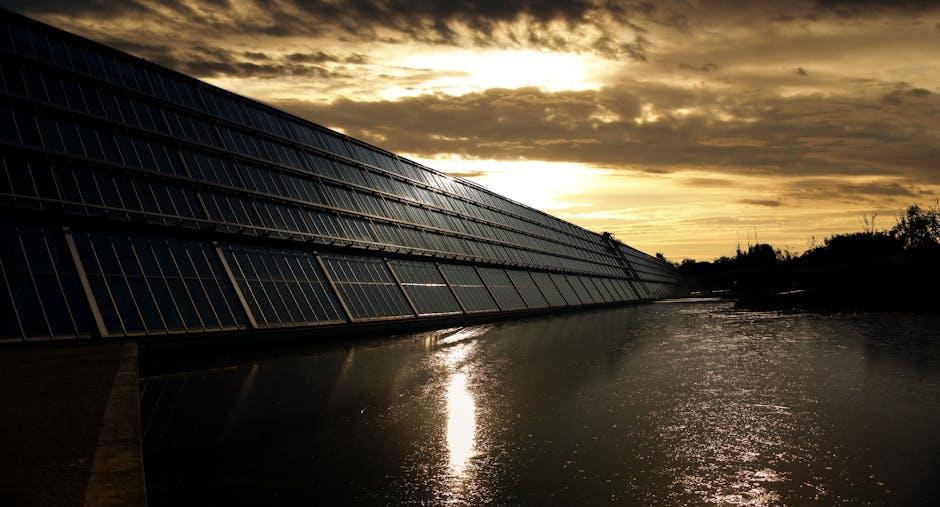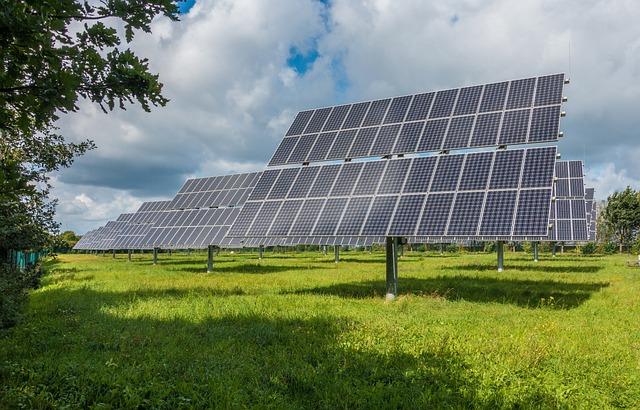In the vibrant tapestry of the 21st century’s global energy landscape, developing countries stand at a pivotal crossroads, faced with the pressing need to balance economic growth with environmental stewardship. As these nations grapple with the intricate challenges of energy poverty, climate change, and sustainable development, the question of which renewable energy source to prioritize becomes paramount. Among the contenders, solar energy, with its promise of abundant, clean, and increasingly affordable power, shines brightly. Yet, it competes with a diverse array of renewable options, each with its own unique advantages and potential pitfalls. In this exploration, we delve into the multifaceted considerations that should guide developing countries as they ponder whether to cast their lot with solar energy or embrace a broader spectrum of renewable resources. As we navigate this complex terrain, we seek to illuminate the pathways toward a resilient and sustainable energy future for the developing world.
Balancing the Energy Equation Solars Role in Sustainable Development
In the quest for sustainable development, solar energy emerges as a beacon of hope, particularly for developing nations seeking to bridge the energy divide. Harnessing the power of the sun offers numerous advantages that align well with the unique challenges faced by these countries. Affordability is a key factor; the declining cost of solar panels makes it a financially viable option. Furthermore, solar energy provides a decentralized solution, empowering remote communities with access to electricity without the need for extensive grid infrastructure.
- Scalability: Solar installations can be tailored to suit local needs, from small-scale home systems to large solar farms.
- Environmental Impact: Reducing reliance on fossil fuels diminishes carbon emissions, fostering a cleaner environment.
- Job Creation: The solar sector can stimulate local economies by creating new jobs in installation, maintenance, and manufacturing.
However, while solar energy holds significant promise, it is crucial for developing countries to maintain a balanced approach, considering a mix of renewable sources. Diversification ensures energy security and stability, adapting to regional conditions and resources. As these nations chart their path to sustainability, solar energy undoubtedly plays a pivotal role, but it should be part of a broader strategy that embraces a holistic view of renewable potential.

Economic Viability Comparing Solar to Wind and Hydroelectric Solutions
When assessing the economic feasibility of renewable energy options, developing countries often weigh the cost-effectiveness and scalability of solar power against wind and hydroelectric solutions. Solar energy stands out due to its rapidly declining installation costs and minimal infrastructure requirements. It offers a versatile solution that can be implemented in both urban and rural areas without the need for extensive grid expansions. Solar technology benefits from low operational costs, reduced dependency on water resources, and the ability to harness energy in areas with high solar insolation.
In contrast, wind energy requires specific geographical conditions and substantial initial investments, which may not be viable for countries with limited financial resources. Hydroelectric solutions, while efficient, often involve high upfront costs and can have significant environmental and social impacts due to land use changes. Key considerations for solar energy’s economic viability include:
- Decreasing technology costs: Innovations in photovoltaic technology continue to drive prices down.
- Scalability and modularity: Solar panels can be deployed incrementally, allowing for flexible investment.
- Low maintenance: Once installed, solar systems require minimal upkeep compared to other renewable sources.
Ultimately, the decision to prioritize solar energy should consider these factors in relation to the specific needs and capabilities of each developing nation.

Harnessing the Sun Overcoming Infrastructure Challenges in Developing Nations
In the quest for energy independence, solar power presents a unique opportunity for developing nations. However, the path to widespread adoption is riddled with infrastructure challenges. Limited access to financial resources, inadequate grid systems, and a lack of skilled workforce can hinder progress. Yet, innovative solutions and international collaborations are emerging as beacons of hope. Some potential strategies include:
- Microgrid systems: These localized grids can operate independently and are particularly effective in remote areas.
- Community-based projects: Engaging local communities can ensure sustainability and provide jobs.
- Public-private partnerships: Collaborations can bring in necessary investment and expertise.
As these nations strive to bridge the infrastructure gap, the potential for solar energy to transform lives remains significant.
Strategic Pathways Crafting Policies for Solar-Powered Growth
In the pursuit of sustainable development, crafting policies that leverage solar energy as a catalyst for economic growth is pivotal. Solar power offers numerous advantages for developing countries, from the abundance of sunlight in equatorial regions to the decreasing costs of solar technologies. Policymakers should consider the following strategic pathways to harness this potential:
- Infrastructure Development: Prioritizing the establishment of solar farms and decentralized solar systems can reduce energy deficits and enhance rural electrification.
- Investment Incentives: Encouraging private investments through tax breaks, subsidies, and favorable tariffs can accelerate solar adoption.
- Capacity Building: Training local technicians and engineers to install and maintain solar systems ensures sustainability and creates job opportunities.
- Research and Innovation: Supporting research initiatives focused on improving solar technology efficiency and storage solutions can drive long-term energy independence.
While other renewable sources like wind and hydro have their merits, solar power’s scalability and adaptability make it a compelling choice for developing nations. By adopting a holistic policy framework that addresses economic, social, and environmental aspects, countries can effectively transition towards a greener future.
Future Outlook
As the sun sets on our exploration of whether developing countries should prioritize solar energy over other renewable sources, it becomes clear that the path to sustainable development is not a one-size-fits-all journey. The vibrant tapestry of each nation’s unique resources, economic landscape, and environmental needs weaves a complex narrative that defies a singular solution. Solar power, with its abundant promise and decreasing costs, certainly shines as a beacon of potential. Yet, the winds of innovation and the currents of tradition call for a harmonious blend of renewable energies, each playing its part in the symphony of sustainable progress. As policymakers, communities, and innovators continue to chart their courses, the ultimate goal remains unwavering: a future where energy is abundant, clean, and accessible to all. In this pursuit, the choice between solar and its renewable counterparts is not merely a question of preference, but a testament to the diversity and resilience of human endeavor.

































